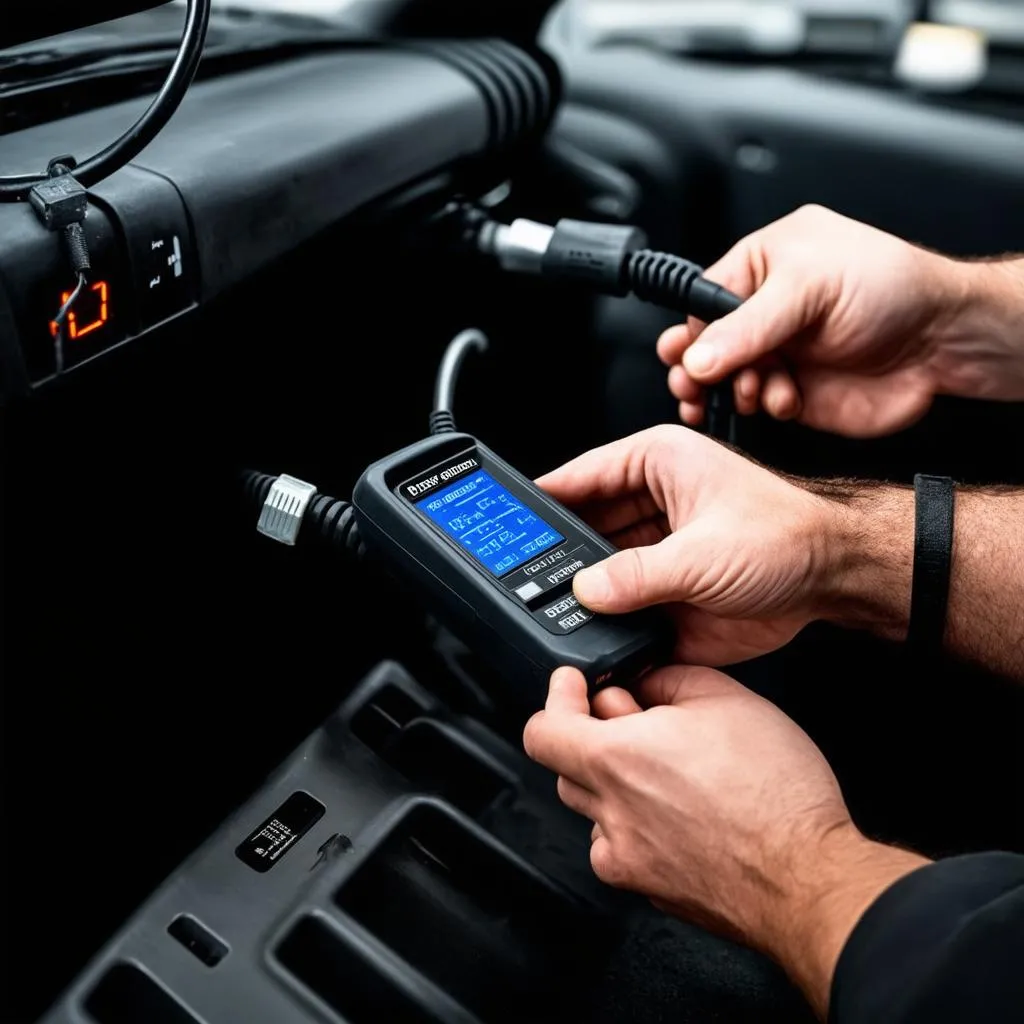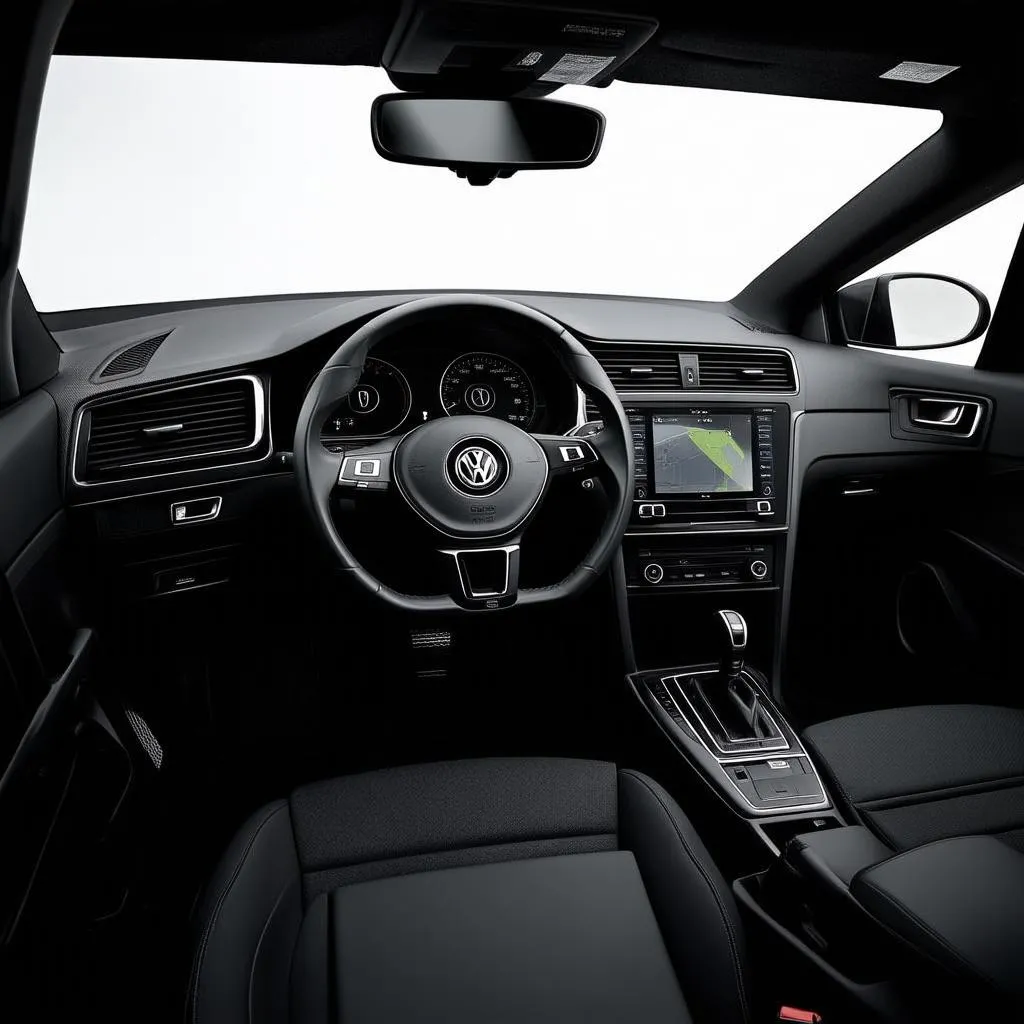Have you ever looked at the array of blinking lights on your Volkswagen Golf’s dashboard and felt a surge of curiosity (or maybe panic)? We’ve all been there! That, my friend, is your car trying to talk to you through the OBD port, a small, often overlooked portal to your car’s inner workings. This article explores the world of the Volkswagen Golf Obd Port – what it is, why it matters, and how you can use it to your advantage.
What is a Volkswagen Golf Obd Port and Why Should You Care?
Imagine being able to understand your Volkswagen Golf’s every whisper, every groan. The OBD (On-Board Diagnostics) port is like a translator for your car. It lets you tap into its electronic brain, access diagnostic information, and even make adjustments.
Here’s why it matters:
- Troubleshooting: The OBD port allows you to read and understand those cryptic dashboard warning lights. No more guessing games!
- Maintenance: Want to stay ahead of potential issues? The OBD port can reveal your car’s health in real-time, helping you catch problems early on.
- Performance Enhancement: For the tech-savvy enthusiast, the OBD port offers a gateway to tweak and optimize your Golf’s performance (though it’s best to tread carefully here!).
Demystifying the Volkswagen Golf Obd Port: Location and Function
You’ll typically find the OBD port on Volkswagen Golfs manufactured after 1996 located beneath the dashboard on the driver’s side, near the steering wheel column. It’s a standardized 16-pin connector that looks a bit like a trapezoid.
Think of the OBD port as a communication hub. When you plug in a compatible device, like a diagnostic scanner (more on those later!), it can communicate with your car’s Engine Control Unit (ECU) and other modules, retrieving valuable data about your car’s health and performance.
Common Uses for Your Volkswagen Golf Obd Port
Here’s where things get interesting! Here are just a few ways you can leverage the power of your Volkswagen Golf’s OBD port:
- Reading and Clearing Diagnostic Trouble Codes (DTCs): Remember those pesky dashboard lights? Connecting an OBD-II scanner can reveal the meaning behind these codes, helping you pinpoint the source of the problem.
- Monitoring Engine Performance: Want to keep an eye on your Golf’s vital signs like engine temperature, fuel economy, and emissions? An OBD-II scanner can provide real-time data.
- Customizing Car Settings: Some enthusiasts use their OBD ports to make adjustments to their Golf’s settings, such as throttle response or lighting preferences, though this should always be done with caution and a good understanding of the potential risks.
 OBD Scanner in Use
OBD Scanner in Use
Choosing the Right OBD Scanner for Your Volkswagen Golf
Now that you understand the potential of your Golf’s OBD port, let’s talk about how to tap into it. You’ll need an OBD-II scanner, a handy device that comes in a range of complexities and price points.
For basic diagnostics: A simple code reader will suffice, allowing you to read and clear those DTCs.
For more advanced users: Consider a Bluetooth OBD-II adapter that pairs with your smartphone or tablet, providing real-time data and even more diagnostic capabilities.
Pro Tip: For European cars like your Volkswagen Golf, you may need a scanner specifically designed for European vehicles to access all available data. You can find some great options for Bluetooth OBD scanners for VW on our website.
If you are interested in chip tuning, you can read our OBD chip tuning box review here.
Beyond Diagnostics: The OBD Port and Vehicle Feng Shui
Now, let’s delve into something a little different. While not directly related to the technical aspects of the OBD port, some believe that the car’s energy flow, much like the concept of Feng Shui in homes, can impact its performance and the driver’s well-being. Maintaining a clean and organized interior, especially around the dashboard area where the OBD port is located, is seen by some as a way to promote positive energy flow within the vehicle.
Disclaimer: While the concept of vehicle Feng Shui is intriguing, it’s essential to approach it with a balanced perspective. The OBD port’s primary function remains technical.
Frequently Asked Questions about Volkswagen Golf Obd Ports
Q: Can I damage my car by using the OBD port?
A: As long as you use a compatible OBD-II scanner and avoid tampering with the wiring, using the OBD port is generally safe.
Q: My OBD port seems to be dead. What should I check?
A: First, verify that the scanner is properly connected and powered on. Check your car’s fuse box for any blown fuses related to the OBD system. If the problem persists, consult with a qualified mechanic.
Q: What is the difference between OBD and OBD-II?
A: OBD-II is the second generation of the On-Board Diagnostics system, becoming mandatory for vehicles sold in the United States in 1996. Volkswagen Golfs manufactured after 1996 use the OBD-II standard.
Q: Can I use any OBD-II scanner on my Volkswagen Golf?
A: While most generic OBD-II scanners will work for basic diagnostics, it’s recommended to use a scanner specifically designed for European vehicles like Volkswagen to ensure compatibility and access to all data streams.
Need More Help with Your Volkswagen Golf?
For specific questions related to your MK5, MK6, or other VW Golf models, you can find more resources on our website:
We also have a wealth of information on other car diagnostic tools and reviews.
 Volkswagen Golf Dashboard
Volkswagen Golf Dashboard
Get in Touch!
We understand that navigating the world of car diagnostics can feel overwhelming. Remember, you don’t have to be a mechanic to take control of your Volkswagen Golf’s health.
Need help with installing diagnostic software or have a question about your Volkswagen Golf’s OBD port? Our team of automotive experts is here to help! Contact us via WhatsApp at +84767531508 for 24/7 support.
Your Volkswagen Golf, Your Journey
Understanding your Volkswagen Golf’s OBD port empowers you to take charge of your car’s maintenance, troubleshoot issues proactively, and even explore performance enhancements. Embrace the technology, ask questions, and enjoy the ride!